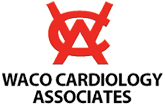Angina pectoris is pain in the chest caused by blockage in the coronary artery. It is typically just called angina and occurs when the heart does not receive all the oxygen it needs. Angina is a symptom of myocardial ischemia. This usually happens when one or more arteries become blocked by plaque. This is a condition known as coronary artery disease (CAD) and angina is the most common symptom of CAD. The chest pains occur when the heart doesn’t get enough oxygen-rich blood. The causes may include; clogged arteries; enlarged heart muscle caused by heart disease or hypertension; or heart valve disease. Coronary artery blockage is the most common cause. Symptoms Angina feels like a deep ache or weight on the chest. Usually described as an uncomfortable feeling of pressure or pain in the middle of the chest. There may be discomfort in the neck, jaw, shoulder, back or arm. Patients with angina may also complain of shortness of breath, nausea, or anxiety. Angina differs from person to person which can make it easy to miss. Chest pain is not necessarily always related to angina. Acid reflux, pulmonary infections and pulled muscles can also cause chest pain. Sometimes it is difficult to differentiate between normal chest pain and angina. Angina can be mistaken for heartburn or indigestion, especially when it occurs in the abdominal area. If the pain occurs in the shoulder, neck, jaw, arm or upper back, it is sometimes mistaken for a pulled muscle. Reporting all of your symptoms to your doctor can help you determine the cause of your symptoms. Activities, where the heart requires more oxygen, can cause angina. Physical exercise, emotional stress and extreme temperatures require more oxygen to the heart. The two categories of angina are stable and unstable. Stable angina Chest discomfort that occurs at regular intervals is caused by stable angina. Most people with stable angina find that anything that puts an additional strain on the heart, such as exercise or stress, triggers their angina. It involves symptoms that usually occur with the same intensity of physical activity, for example, climbing a flight of stairs. The stress caused by anger or unhappiness can also cause symptoms. It is advised that patients with symptoms of angina undergo an evaluation of their heart disease and risk factors with their cardiologist. The cardiologist may take your medical history and conduct a physical exam to determine whether the symptoms are indicative of angina pectoris. If they believe angina is a possibility, tests are normally performed. Usually, the first test is an electrocardiogram (ECG). Sometimes, a chest X-ray is used to evaluate the size of the heart and to see if there are lung problems causing the symptoms. In some people, a stress test is needed to see if the heart changes during exercise, or with medications that subject the heart to stress. An echocardiogram takes images of the heart to see if there is a structural problem. Catheterization of the heart may be necessary to see if a patient’s symptoms are caused by blockage of coronary vessels. Unstable angina People with unstable angina experience unpredictable and unexpected chest pain. The first time that someone experiences angina it is usually considered unstable because they do not yet know the type. In some patients, symptoms can occur while they are resting. Patients with unstable angina may have more severe symptoms than those with the stable form. Most commonly, the cause of unstable angina is coronary artery blockage, which limits blood flow to an area of the heart. The symptoms may also be caused by abnormal narrowing of an artery or partial blockage by a blood clot. Inflammation or infection can also cause unstable angina. Patients with new or unstable angina should call 911. Unstable angina may precede a heart attack. It can also lead to irregular heartbeats, which could lead to sudden cardiac death. Coronary artery spasms cause Prinzmetal’s angina, which tighten the coronary artery and reduce blood flow. This causes chest discomfort and usually occurs at rest. Frequently related to atherosclerosis, the spasms occur near the area of the blockage, which limits blood flow more than the blockage itself. Angina can also occur due to microscopic blood vessels in the heart not functioning correctly. This is known as microvascular angina due to microvascular ischemia and it appears more frequently in women. This could possibly occur with bigger coronary arteries that don’t have any significant blockages. This is becoming recognized more as a cause of chest pain, especially in women. Treatment of angina Angina pectoris can be treated with medications that affect blood flow to the heart, the heart’s required oxygen, or both. Vasodilators affect blood flow to the heart and make blood vessels relax. Because of this, the space within the vessels grows larger. Blood flow improves and allows more oxygen and nutrients to reach the heart. Nitroglycerin is the most used medication. It relaxes the blood vessels, especially the veins and the coronary arteries slightly. Relaxing the veins decreases the volume of blood that returns to the heart easing the heart’s workload. By relaxing the coronary arteries, it increases the flow of blood to the heart. Oxygen requirements can also be adjusted with medications that lower blood pressure. Since the heart does not need to pump against as much pressure, the heart’s workload is reduced. Medications that decrease heart rate work similarly-. For these effects, medications called beta-blockers and calcium antagonists (calcium channel blockers) are used. There are many beta blockers and calcium antagonists. The specific medication used is chosen depending on each patient’s individual needs. Patients with angina often require cardiac catheterization or coronary angiography. This procedure allows doctors to take images of the heart and the blood vessels that carry blood to the coronary arteries to see if they are blocked. This information can help your doctor determine whether you need a medication that improves blood flow to your heart, whether you need a procedure called percutaneous angioplasty or stenting, in which the coronary artery is opened with a special catheter, or whether you need open-heart surgery to improve blood flow to the coronary artery. A heart-healthy lifestyle as well as critical mediations that thin the blood to prevent heart attacks, and medications such as statins that lower cholesterol and help keep the plaque in arteries from worsening, are equally important.
Caring for the hearts of Central Texas Since 1971
(254) 399-5400


